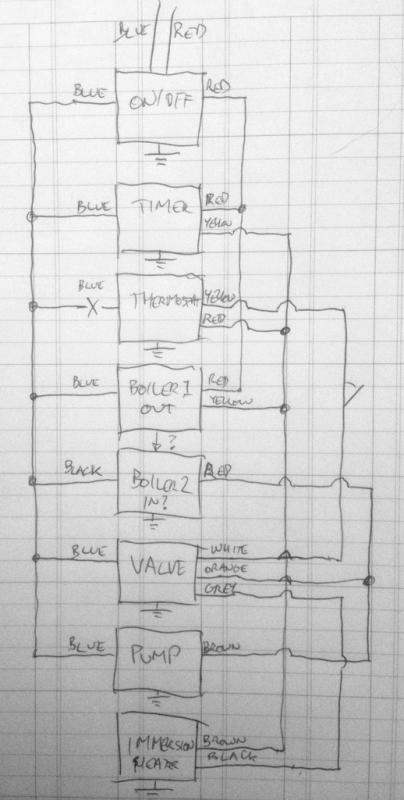Hi all, hoping you can help.
I was away on Xmas hols for the last week, and when I got back the house was an astonishing 28.5C. But there was no hot water.
Due to the cold weather, before I left I had set the room thermostat to 5C frost protection only, with the boiler activated. Normal behaviour would be that the hot water would keep being heated but the CH would only activate if the house got excessively cold.
The thermostat has a live switch direct to the white wire on the Honeywell Sundial Y Plan 3 Position Diverter Valve.
My theory: something in the valve failed while I was away, locking it in the "A", central heating only position, activating the CH pump and gas boiler, which just churned out CH heat for days (the woman feeding my cat says it has been unbearably hot in the house since Xmas day - heaven alone knows how much money this has cost me).
The valve switch has no physical resistance, and when I took off the cover there seemed to be no connection between moving the slider to "Manual" position, and any of the inner workings; nothing is turning either when it's on or off and there's no spring action at all. I tried to take the motor unit off the valve via the backplate, but water started squirting everywhere.
One thing I don't get: with the power switched off, there is no electrical resistance between the two terminals coming into the thermostat (Live and Live Switch), or at the valve end. Could this indicate a short circuit in the valve perhaps?
So my question is: is my theory likely to be correct? If so, is there any way to fix it without a) draining the system; b) calling out a heating engineer?
If it isn't the valve that's failed, does anyone have any ideas what might be the problem?
Thanks very much for your help with this.
I was away on Xmas hols for the last week, and when I got back the house was an astonishing 28.5C. But there was no hot water.
Due to the cold weather, before I left I had set the room thermostat to 5C frost protection only, with the boiler activated. Normal behaviour would be that the hot water would keep being heated but the CH would only activate if the house got excessively cold.
The thermostat has a live switch direct to the white wire on the Honeywell Sundial Y Plan 3 Position Diverter Valve.
My theory: something in the valve failed while I was away, locking it in the "A", central heating only position, activating the CH pump and gas boiler, which just churned out CH heat for days (the woman feeding my cat says it has been unbearably hot in the house since Xmas day - heaven alone knows how much money this has cost me).
The valve switch has no physical resistance, and when I took off the cover there seemed to be no connection between moving the slider to "Manual" position, and any of the inner workings; nothing is turning either when it's on or off and there's no spring action at all. I tried to take the motor unit off the valve via the backplate, but water started squirting everywhere.
One thing I don't get: with the power switched off, there is no electrical resistance between the two terminals coming into the thermostat (Live and Live Switch), or at the valve end. Could this indicate a short circuit in the valve perhaps?
So my question is: is my theory likely to be correct? If so, is there any way to fix it without a) draining the system; b) calling out a heating engineer?
If it isn't the valve that's failed, does anyone have any ideas what might be the problem?
Thanks very much for your help with this.


